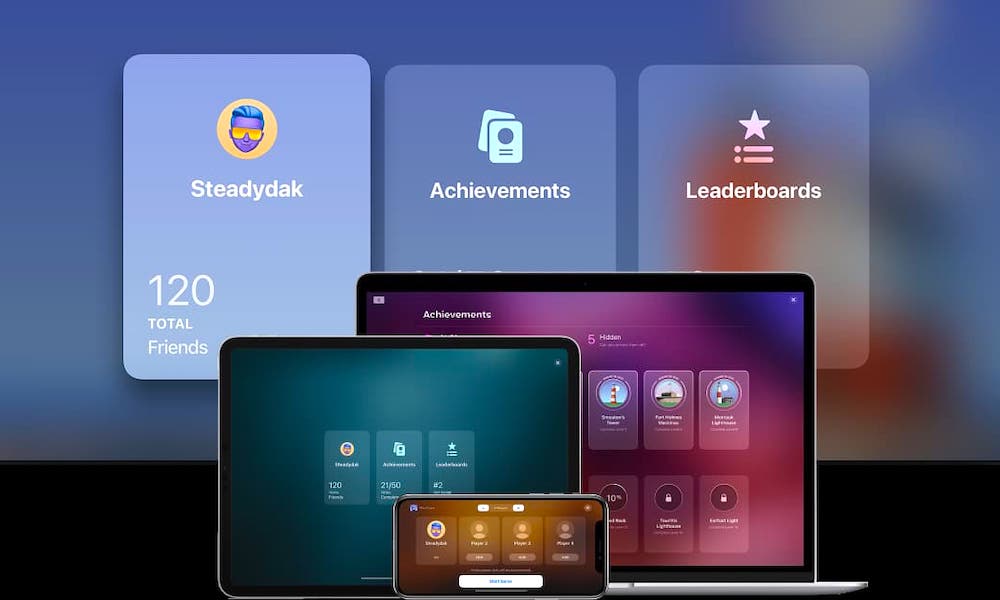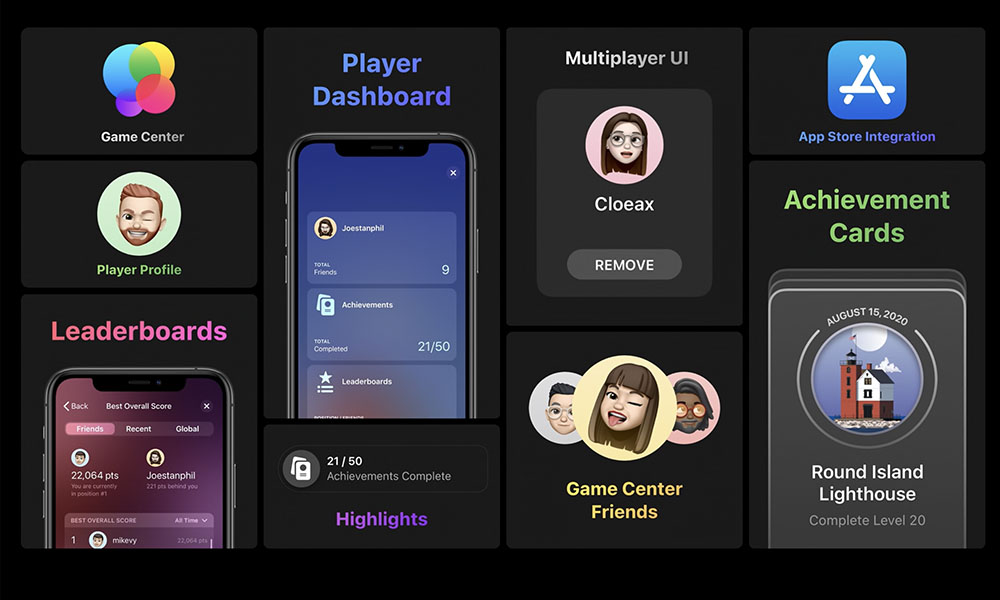Game Center Is Making a Big Comeback in iOS 14 Along with Advanced Game Controller Support
 Credit: Apple
Credit: Apple
Toggle Dark Mode
There’s been little doubt over the past year or so that Apple is getting pretty serious about gaming on its platforms. Last year the company launched Apple Arcade, which pretty much put it into the role of game publisher, and iOS 13 and tvOS 13 added support for popular Xbox One and PS4 game controllers.
Apple has long acknowledged that gaming is an important part of the iOS ecosystem, but its approach in the past has been a bit scattershot. For example, back in 2010, Apple added a new Game Center app that was designed to allow gamers to interact with each other in a whole new set of ways, allowing iOS games to tie into a common framework that could be used for tracking achievements, multiplayer gaming, and more.
With Game Center, users could sign up with their Apple ID, pick their own nickname, and then compare their scores in supported games — and there were a lot of them — with others. Game Center even offered the ability to save and sync game progress across devices.
So it was a bit surprising when Apple canned the standalone Game Center app in iOS 10, moving the feature more into the background. While the Game Center frameworks never went away, we can’t blame you if you forgot it existed, as iOS users lost the dashboard that allowed them to check their status across games — it became up to developers to provide a user interface into Game Center, and many didn’t really do that in any meaningful way.
The Return of Game Center
However, with this week’s release of iOS 14, it looks like Game Center is making a big comeback, with a redesigned Game Center dashboard that will be available on iOS, macOS, and — for the first time — tvOS too.
The new Game Center will include all of the same features from before, including the ability to view your achievements, leaderboards, and other user profiles, except now instead of a standalone app it’s going to be tied into a new in-game dashboard that will be found in all Apple Arcade games along with an updated Game Center section in the iPhone and iPad Settings app.
Not surprisingly, Apple is also going to leverage Game Center more for Apple Arcade games, which will let you see what games are popular with your friends, and challenge them to competitions. There will also be recurring leaderboards for daily, weekly, and monthly competition rankings.
Apple Arcade Improvements
As MacRumors notes, Apple Arcade gamers can also expect a few other feature updates to enhance the service, including achievement lists right on the actual game page in the Apple Arcade store, more filters for finding new games, and an improved “continue playing” feature to let you quickly get back into your recent games on other devices — even if you haven’t installed them there yet.
It also looks like Apple Arcade developers will be expected to fully integrate with the new and improved Game Center, while third-party game developers are being strongly encouraged to do so as well, meaning we’ll hopefully see more developers return to embracing Game Center like they once did.
Even Better Game Controller Support
Last year Apple added support for Sony’s Playstation DualShock 4 and Microsoft’s Xbox One S game controllers, and even began selling them in its retail stores, and when Apple announced iOS 14 earlier this week, it briefly touched on the fact that it will be expanding that support to include Xbox’s Elite Wireless Controller Series 2 and the Xbox Adaptive Controller.
A subsequent developer session has confirmed that not only will this support be coming to tvOS, iOS, and iPadOS, but Apple also plans to take full advantage of these new controllers by adding new core OS-level features, including full controller button remapping and a new Core Haptic framework.
These new features will allow game developers to take advantage of the advanced Microsoft controllers without having to worry about the details of coding all of the support in themselves, as iOS and tvOS will handle the heavy lifting of communicating with the controller. For example, a game can simply tell iOS to make the controller vibrate, and the Core Haptic APIs will take care of the rest.
Apple is also bringing full keyboard and mouse support for gamers in iPadOS 14, including the ability to remap buttons on a per-game basis, and read multiple simultaneous button presses. Again this will be handled entirely as the iPadOS level.
In addition, Apple is going even further, offering built-in support for specialty controller features like motion sensors, controller lights, and monitoring battery levels.









